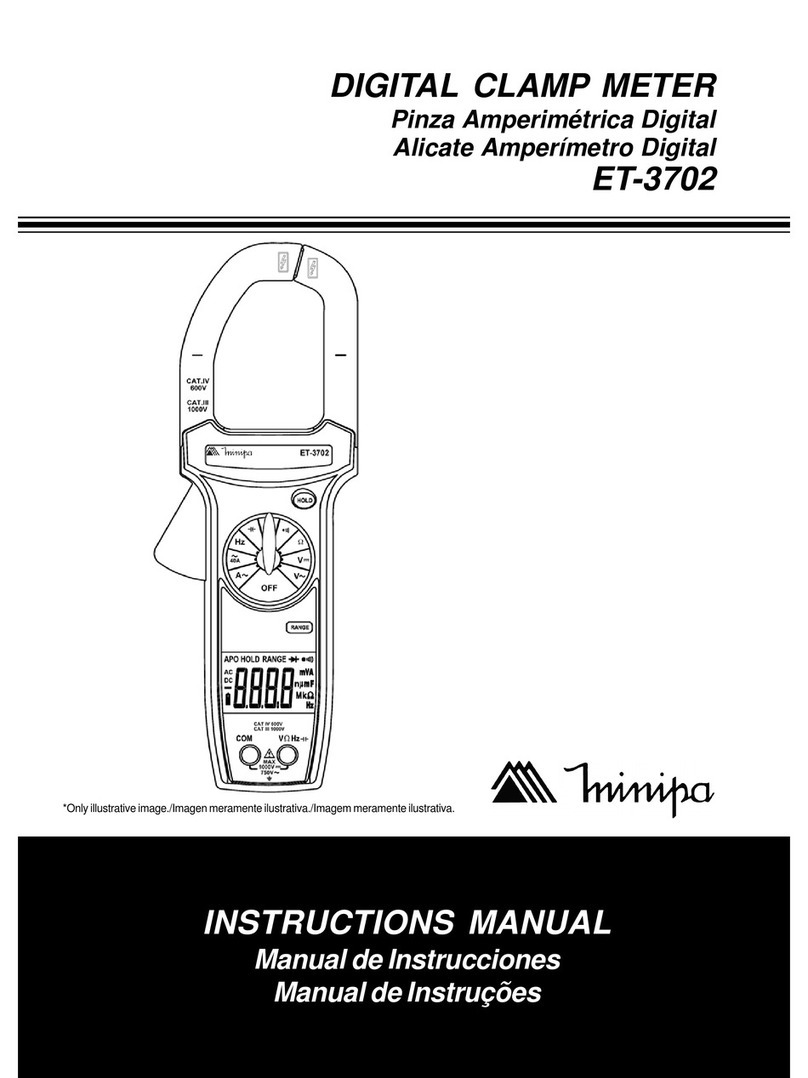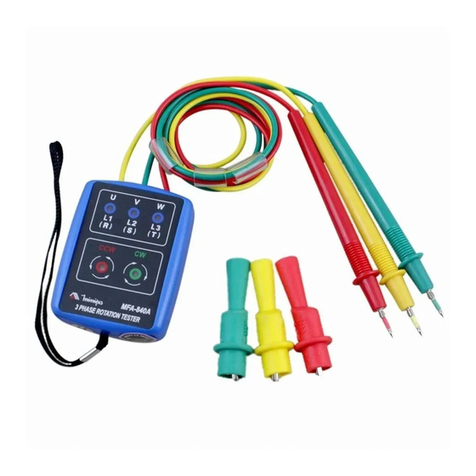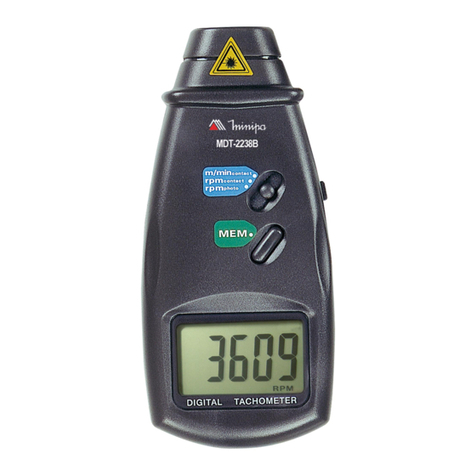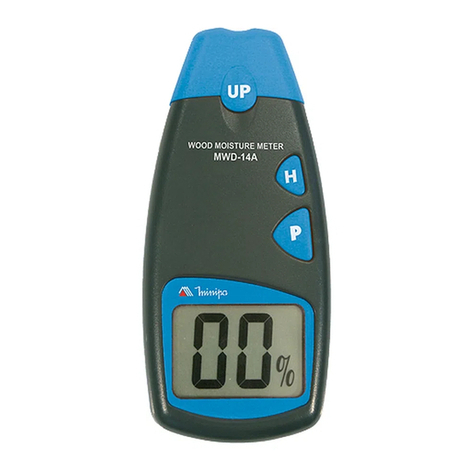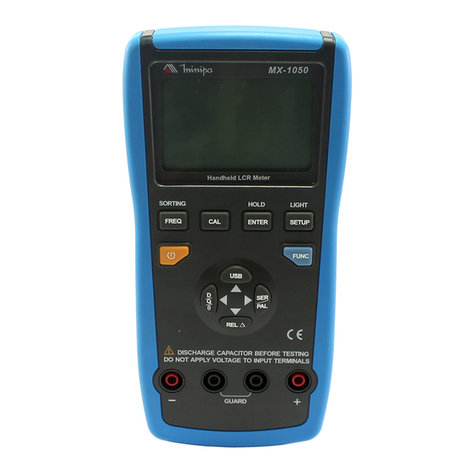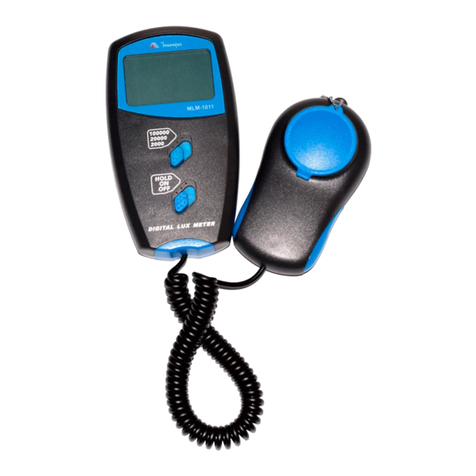
5
6)OPERATION
6.1 Measurement Consideration
1) This capacitance meter was designed to measure capacitance of
capacitors.The meter willnotmeasure “Q” factorofreactive components.
Wrong reading will be displayed when trying to reading the capacitance
of resistors.
2) When components are measured in circuit, turn the circuit off and
discharge all capacitors before connect the test leads.
3) Do not get the test leads close to each other (black & red).
4) Instruments used in aggressive environments, with dust, must be
cleaned periodically.
5) Do not expose the capacitance meter to heat by long time.
6) Before remove the battery cover or open the capacitance meter, check
if the meter is disconnected from the circuit and the rotary switch is in
OFF position.
7) Toall measurements,connect the black test lead tonegative “-” terminal
and the red test lead to positive terminal “+” of capacitor.
6.2 Capacitance Measurement
1) Set the rotary switch to the desired measurement, in accordance with
the value of capacitor to be tested.
2) Zeroindication check: at 200pF, 2pF, 20nFranges, checkifthe indication
is zero. If not adjust it by turning the Zero Adjustment key.
3) Check the polarity when measuring polarized capacitors.
4) Discharge completely the capacitor before measurement, and if the
measurement will be made in circuit, turn off the power supply and
discharge all capacitors before measurements.
5) Connect the test leads black and red to “-” and “+” terminals, and the
alligator jaws to the terminals of component under test. Or utilize MAK-2
adaptor to conect the capacitor to the capacitance meter.












